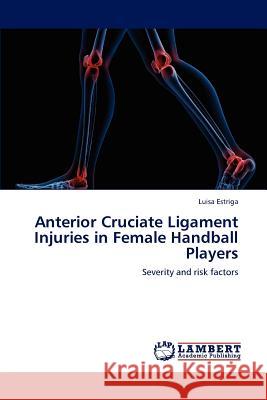Anterior Cruciate Ligament Injuries in Female Handball Players » książka
Anterior Cruciate Ligament Injuries in Female Handball Players
ISBN-13: 9783847347309 / Angielski / Miękka / 2012 / 412 str.
This work studies the aethiology of the most severe injury in the female handball population. It follows three main lines of research that interact among themselves. A first one attempts to characterise the injury incidence and profile of this population. About 1/3 of all the Portuguese female handball players were sampled retrospectively and/or prospectively throughout 3 sport seasons. The main conclusion is that ACL ruptures are, among the severe injuries, the most occurring ones. A second one attempts to compare statistically the muscular force changes and the ACL injury risk. A strong ACL injury risk predictor is the hamstrings peak torque. A third one consisted in a comparison of the monthly changes in the serum hormonal contents of a few players with both the lower limb muscular strength and the anterior knee laxity. Only a faint correlation could be seen between the hormonal levels and the knee laxity. These findings are mainly negative results but are strong enough for building the hypothesis of a decisive role of the practice load on the risk and prevention of ACL injuries."
This work studies the æthiology of the most severe injury in the female handball population. It follows three main lines of research that interact among themselves. A first one attempts to characterise the injury incidence and profile of this population. About 1/3 of all the Portuguese female handball players were sampled retrospectively and/or prospectively throughout 3 sport seasons. The main conclusion is that ACL ruptures are, among the severe injuries, the most occurring ones. A second one attempts to compare statistically the muscular force changes and the ACL injury risk. A strong ACL injury risk predictor is the hamstrings peak torque. A third one consisted in a comparison of the monthly changes in the serum hormonal contents of a few players with both the lower limb muscular strength and the anterior knee laxity. Only a faint correlation could be seen between the hormonal levels and the knee laxity. These findings are mainly negative results but are strong enough for building the hypothesis of a decisive role of the practice load on the risk and prevention of ACL injuries.











